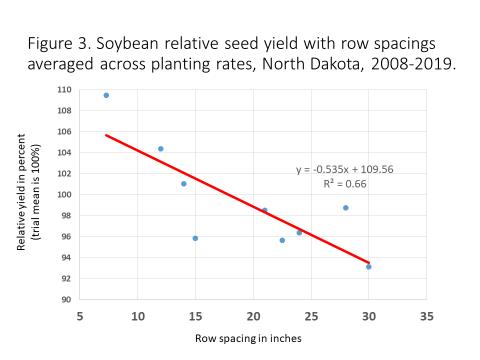“This year,
there are no right answers!” - Kristie Sundeen, Pioneer
Field Agronomist
Field soil conditions are currently
very suitable for planting, but the lack of adequate consistent soil
temperatures provide concern. A few
farms showed some patience, but many operations dove right into the sugarbeet,
corn, canola, and/or soybean planting.
By the end of May, we’ll have the benefit of hindsight but even then,
that won’t do us much good. A few
operations went ahead but moved at a very slow pace waiting for more ideal
conditions for the majority of their acres.
As usual, we’ll see what the best plan of attack would have been (not
that it really matters).
Regional Weather
As usual, it takes until the month
of May to arrive until we see some consistent soil temperatures in the mid to
upper 40’sF in many locations of the far northern plains. Even though we’ll have some overnight lows
around the freezing mark this week, we should see our soil temperatures become more
consistent. To me, we should now feel
confident planting corn and any early soybeans.
Without a significant cold front or precipitation in the 7-10 day forecast,
I’d even say we should plant right-up to any future rain/cold event (unless unprecedentedly
cold).
The soil temperature chart (oFahrenheit) comes from NDAWN at 8 am Monday, May 3rd. These figures at all locations and depths do continue to build, albeit slowly. I highlighted in blue any readings below 40F and gave the red highlights to any reading at or above 49F. Bottineau clearly remains the coolest spot, while Dickinson and Fargo via for the warmest soils in the state currently.
I’ll count on your weather app
for the best guidance through the 7-8 day forecast, but looking beyond that,
I’ve found this site from National Oceanic Atmospheric Association (NOAA) to be
fairly reliable for a general 8-14 day outlook (next week).
https://www.cpc.ncep.noaa.gov/products/predictions/814day/index.php
For the second full week of May,
the forecast for our region looks to have greater potential for below average temperatures
and above average precipitation. Sunday
evening’s rain event did provide some moisture, but it was fairly light in
general (see map), so we’ll take any additional rainfall.
The
NOAA organization also provides three month outlooks. If we would like to get a general forecast
for the latter half of the summer season (July-Aug-Sept), it can be seen here:
https://www.cpc.ncep.noaa.gov/products/predictions/long_range/seasonal.php?lead=3
This
forecast currently predicts above average chances on the temperature potential and
below average on the precipitation potential as we move into the later stages
of the season for our region. If we don’t
get some good rains in June this year, we may struggle once again with some
drought stress in August.
Soybean
Planting Rates and Row Spacing
NDSU’s Crop and Pest Report is off and
running for the season. One key topic
they reviewed was soybean planting regarding seeding rates and row spacing.
For row spacing, their 12-year data
(2008-’19) reveals the yield advantage remaining with narrow rows – less than
15” being optimum (see graph). Most of
the row spacing tests were conducted at 7”, 12”, 14”, 24”, and 28”, and seeding
populations were numerous between 80k and 200k kernels per acre.
The planting equipment utilized at the
various sites across North Dakota was not mentioned, but my guess is they just
used their 7” or 12” drill and blocked-off rows to get their desired test
spacing. To me, this is significantly different
than using a planter at 22” or 30” and comparing against an air-drill at 14” or
less spacing.
From my perspective, fields that show
some agronomic challenges with IDC (iron deficiency chlorosis) or white mold
(sclerotinia), or poor seedbed do tend to yield better with the planter versus
a drill as they obtain more uniform depth and subsequent better plant
emergence. In the case of sclerotinia,
wider rows do allow additional air movement through the canopy and thus drier
soil surfaces to minimize sclerotia germination. On those more uniform high yielding fields
without white mold pressure, I’m sure narrow rows with populations in the
170-180k range would yield the best.
The seeding rate analysis from the same trials over the 12-year span reveals a wide window where soybeans can still achieve 100-101.7% of yield. This window basically indicates full yield can be achieved with planting rates on a PLS (pure live seed) basis from 135 to 220 PLS per acre. NDSU’s research did show on average an 8% loss of kernels – therefore, needing about 146k kernel drop/acre to obtain the 135k/acre live viable plants. Maybe a planter will provide more PLS over an air-seeder/drill, but I think it would be a minimal difference.
USDA Crop Progress Report
Corn planting progress more than
doubled (almost tripled) over the past week and currently sits at 46% complete
according to the USDA (17% last week). Today’s
report (Monday, May 3rd), also reveals 24% of the nation’s soybeans
are planted which is triple last week’s figure of 8%. At this pace, most of the corn and soybeans
will be planted in the next 10-14 days if we don’t see some significant rains.
Of the corn acres that are planted,
only 8% have emerged which is basically right on pace of the 5-year average of 9%.
Spring wheat seeding is also ahead of
the average pace at 49% complete (5-year average of 32%). Of the spring wheat that is planted, about
14% is emerged which is slightly ahead of the 5-year average of 10%.
https://usda.library.cornell.edu/concern/publications/8336h188j
Sunflower Nitrogen Calculator
NDSU’s sunflower calculator for estimating
nitrogen application rates for sunflower production in North Dakota has been available
for a few years. It’s a fairly simple model
that asks for only a few field parameters (sunflower type: oil vs confections,
prior crop, tillage system, soil organic matter, and soil test nitrogen), along
with a couple economic parameters – sunflower commodity price and nitrogen
price.
https://www.ndsu.edu/pubweb/soils/sunflower/
Most scenarios will call for around 150 lbs
total N/ac in eastern North Dakota. If
you are planning on sunflower production in a field that has recently been CRP (or
pasture) and you are still building soil fertility, then I would recommend
additional nitrogen. Conversely, if you
have typically been heavy on the nitrogen fertilizer for high nitrogen use
crops (small grains, corn, canola), then most likely the sunflowers will scavenge
some nitrogen that has leached to deeper soil zones, thus requiring less
nitrogen application.
If you’d like to see NDSU full sunflower fertility
recommendations from Dr. Dave Franzen (revised Feb. 2016), they can be viewed
at the following website:
https://www.sunflowernsa.com/...Sunflower.NDSU.SF713_Feb.2016.pdf
Product Spotlight:
Herbicide Carryover
I know, “herbicide carryover” is not a
product to spotlight, but it can and does occur in our environment from time to
time when rainfall has been significantly below average. I addressed this topic over the winter, but
as conditions continue on the dry side, it’s worth another quick review.
In a nutshell, our northern latitudes (cool
soil temperatures), high soil pH’s (7.7 and above), short growing season, and areas
of low soil organic matter (o.m. under 2.0%) create scenarios where herbicides
can persist longer in the soil than anticipated. Throw in some periodic drought conditions and
the risk increases.
One of the main concerns this year could be
with copyralid (Stinger®). Corteva™ has
a couple products that contain copyralid – WideMatch® and Perfect Match® - and
the Stinger® product is widely used in sugarbeets and sometimes for corn and
canola. The label states for soils with
greater than 2% o.m., a rainfall rate of 15” (over the 12 months since
application) is needed for a 10.5-month rotation interval to soybeans, dry
edible beans, and/or sunflower. If soils
are less than 2% o.m. than the rotation restriction is 18 months to these crops
regardless of rainfall. For, North
Dakota we probably need to get west of Hyw 32 to find areas that do not meet
this threshold.
https://www.ag.ndsu.edu/cpr/weeds/herbicide-carryover-concerns-in-2021-04-29-21
Stinger®
label: https://s3-us-west-1.amazonaws.com/agrian-cg-fs1-production/pdfs/Stinger_Label1h.pdf
Random Agricultural Facts – Ethanol Update
Ethanol production in the US did
decline somewhat in 2020 – about 15-16% compared to the average of the past
three years. With Brazil and the US
leading global ethanol production, this same trend of 15-16% decline in
production is estimated for the world.
If you figure that the average
bushel of corn will produce about 2.85 gallons of ethanol, a 15% reduction in ethanol
output in 2020 accounted for 1.365 bil bushel loss of corn grain consumption.
With the corn commodity market in
its current rally, the global demand for corn most likely resides with the need
for animal feed in the US’s export markets.
https://www.statista.com/statistics/281494/us-fuel-ethanol-production/ https://downloads.usda.library.cornell.edu/usda-esmis...pdf https://www.iea.org/reports/renewables-2020/transport-biofuels








No comments:
Post a Comment